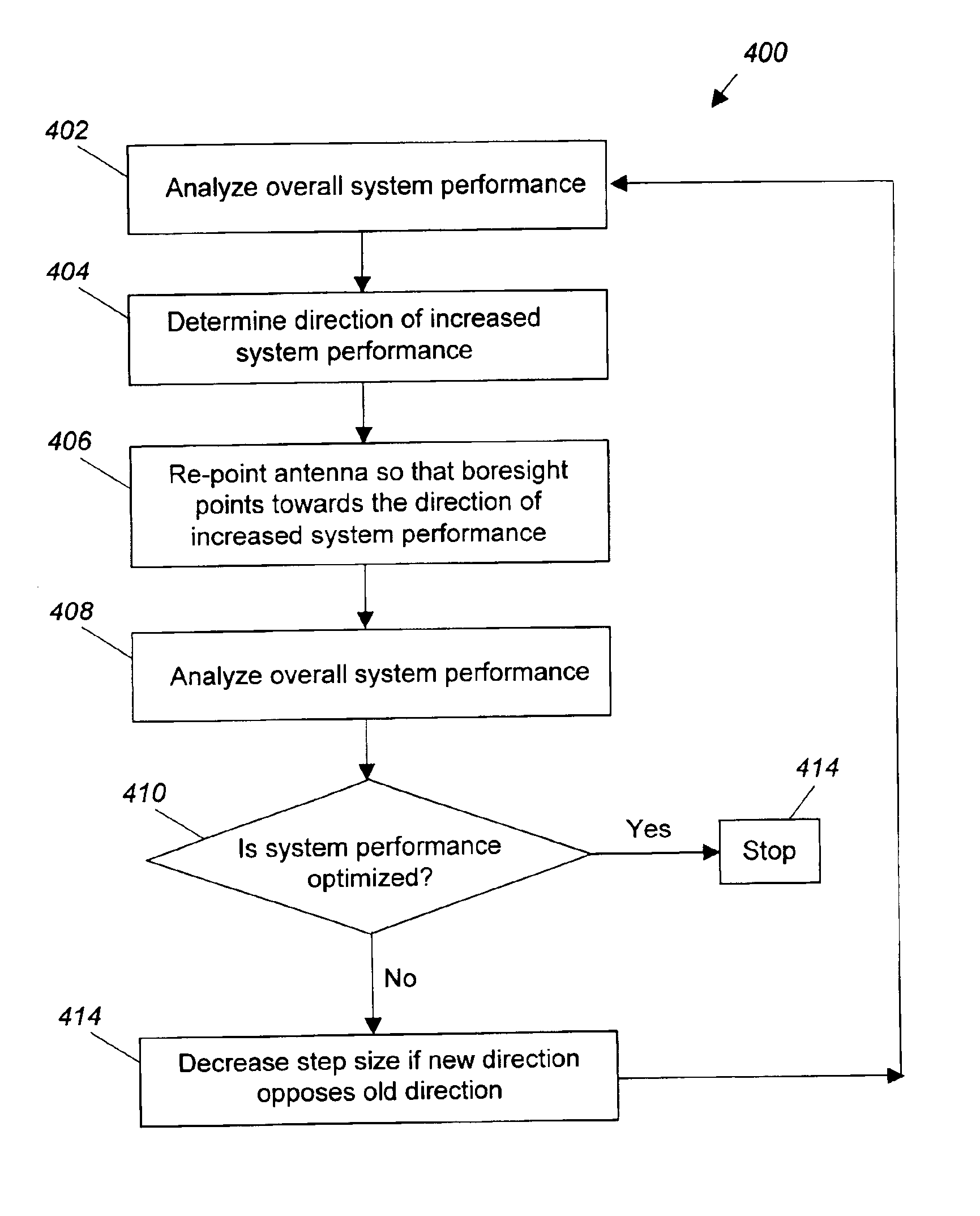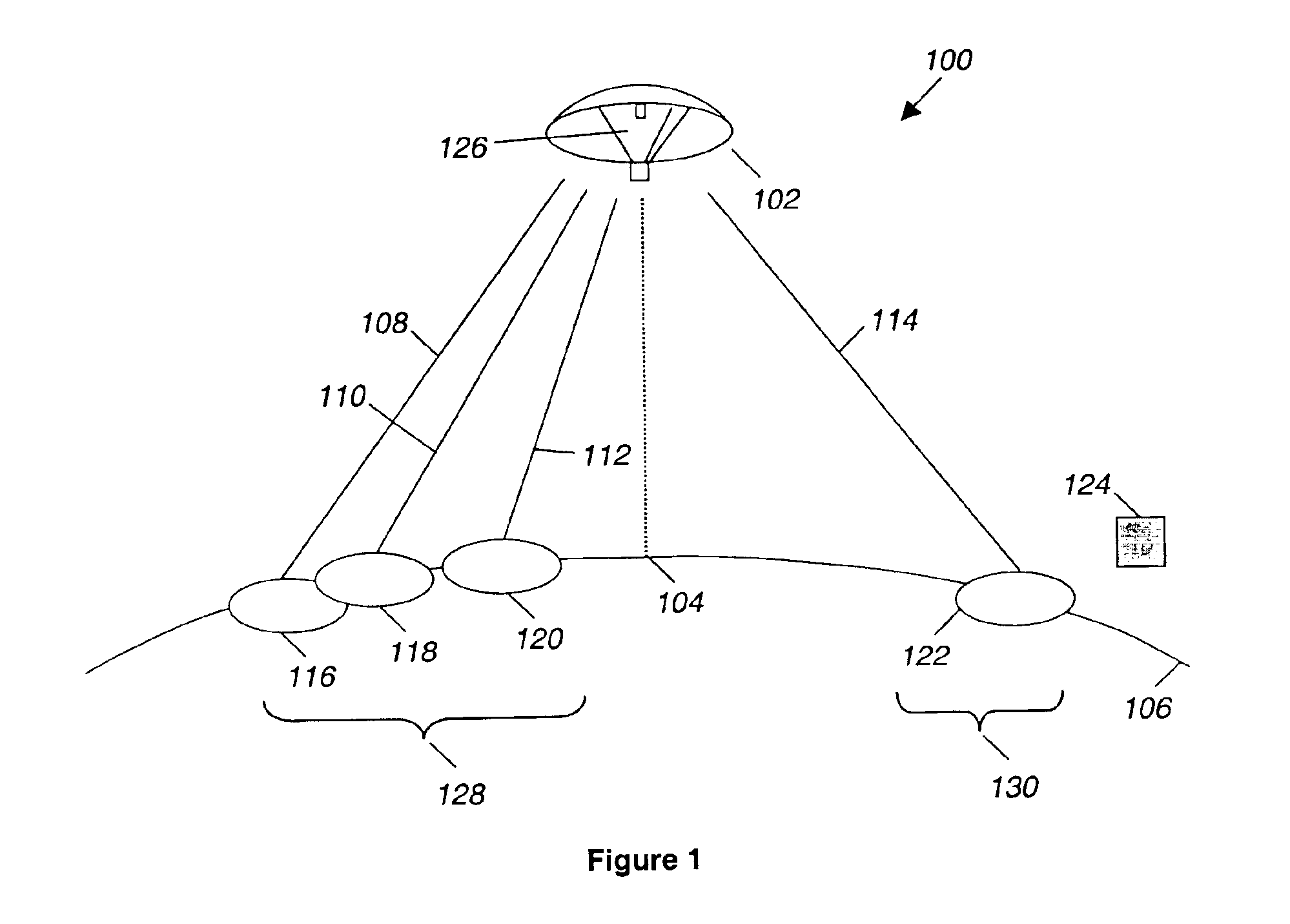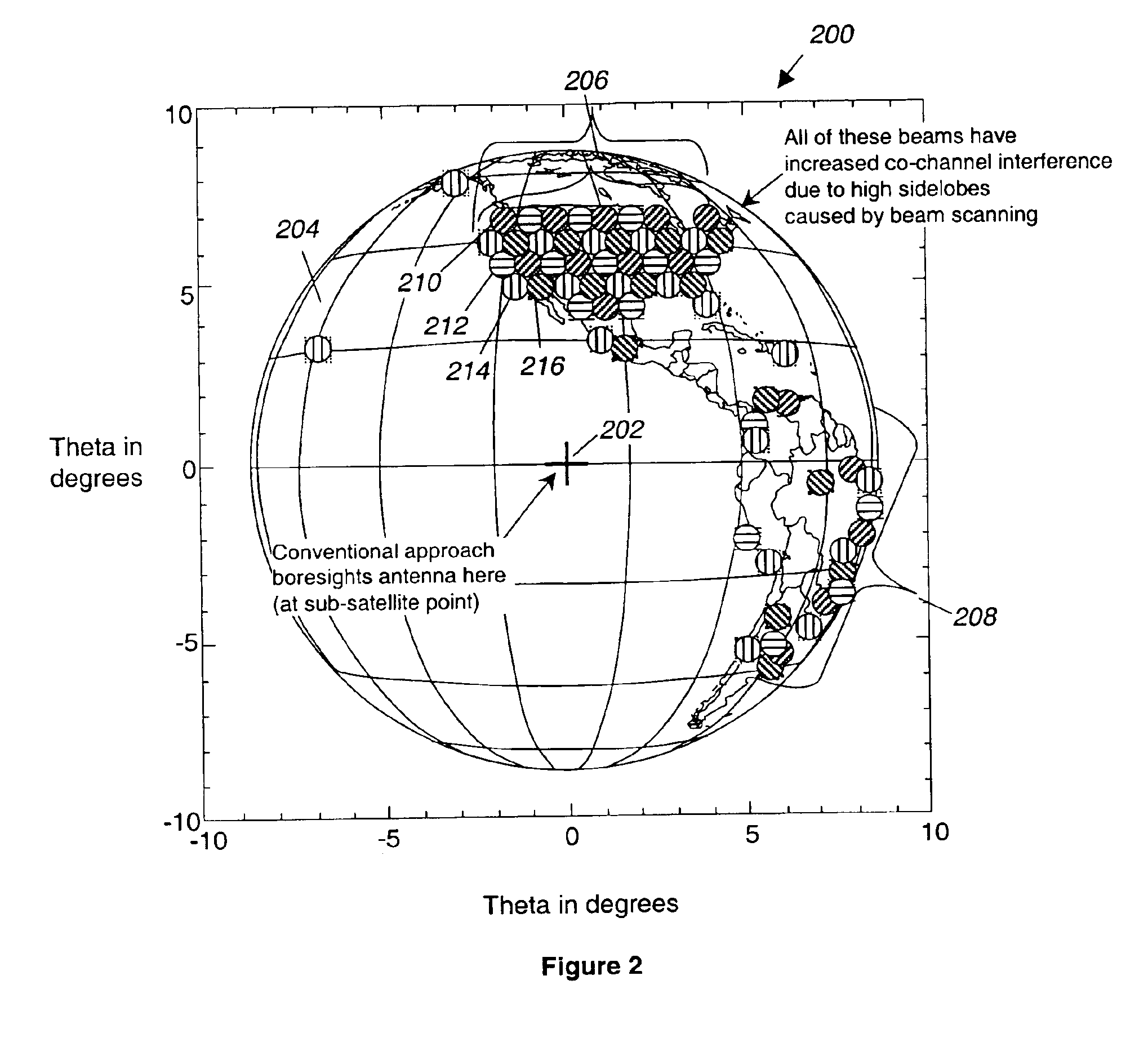Reducing co-channel interference in satellite communications systems by antenna re-pointing
a satellite communication system and cochannel interference technology, applied in the field of satellite communication systems, can solve the problems of sidelobe interference, affecting the performance of the communication system, and signals being transmitted at the same frequency may interfere with each other, so as to optimize the pointing of the boresight of the satellite-mounted antenna, increase the performance of the satellite communication system, and minimize the effect of cci
- Summary
- Abstract
- Description
- Claims
- Application Information
AI Technical Summary
Benefits of technology
Problems solved by technology
Method used
Image
Examples
second embodiment
[0037]In the present invention, the positions of co-channel cells in the frequency re-use pattern are analyzed to determine regions of low density and high density. Once the region of highest density has been determined, the sub-satellite point is simply centered on the region of highest density.
first embodiment
[0038]Referring again to FIG. 3, the optimized electrical boresight 302 is shown relative to the sub-satellite point 202. The optimized electrical boresight 302 shown in FIG. 3 has been determined according to the present invention, that is, the contributions of each cell in the system have been analyzed and the overall CCI for the system has been minimized. As seen in FIG. 3, the optimized electrical boresight 302 points generally toward the center of the area of high density 206 and has thus been angularly displaced away from the region of low density 208.
[0039]As discussed above, displacing the boresight towards the region of high density 206 reduces the sidelobe power generated by the spot beams in the region of high density 206. Thus, the contribution to the system-wide CCI for the spot beams in the region of high density is lowered. However, displacing the boresight towards the region of high density 206 displaces the boresight away from the region of low density 208. Displaci...
PUM
 Login to View More
Login to View More Abstract
Description
Claims
Application Information
 Login to View More
Login to View More - R&D
- Intellectual Property
- Life Sciences
- Materials
- Tech Scout
- Unparalleled Data Quality
- Higher Quality Content
- 60% Fewer Hallucinations
Browse by: Latest US Patents, China's latest patents, Technical Efficacy Thesaurus, Application Domain, Technology Topic, Popular Technical Reports.
© 2025 PatSnap. All rights reserved.Legal|Privacy policy|Modern Slavery Act Transparency Statement|Sitemap|About US| Contact US: help@patsnap.com



